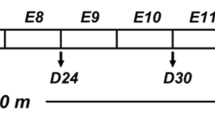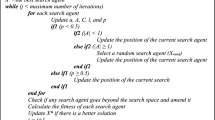Abstract
Sensitivity-based methods using modal data are effective and reliable tools for damage localization and quantification. However, those may fail in obtaining reasonable and accurate results due to low damage detectability of sensitivity functions and the ill-posedness problem caused by noisy modal data. To address these major challenges, this article proposes a new method for locating and quantifying damage by developing a new sensitivity function of modal strain energy and solving an ill-posed inverse problem via an optimization-based iterative regularization method called Iteratively Reweighted Norm-Basis Pursuit Denoising (IRN-BPD). A stopping condition based on the residual of the solution and an improved generalized cross-validation function are proposed to terminate the iterative algorithm of IRN-BPD and determine an optimal regularization value. The major contributions of this article include getting an idea from the first-order necessary condition of the optimization problem for deriving a sensitivity formulation and proposing a new regularized solution. The great advantages of these methods are increasing damage detectability, determining an optimal regularization value, and obtaining an accurate solution. A simple mass–spring system and a full-scale bridge structure are considered to verify the accuracy and effectiveness of the proposed methods in numerical studies. Results demonstrate that the methods presented in this article succeed in locating and quantifying damage under incomplete noisy modal data.



















Similar content being viewed by others
References
Yan Y, Cheng L, Wu Z, Yam L (2007) Development in vibration-based structural damage detection technique. Mech Syst Sig Process 21(5):2198–2211
Das S, Saha P, Patro S (2016) Vibration-based damage detection techniques used for health monitoring of structures: a review. J Civ Struct Health Monit 6(3):477–507
Daneshvar MH, Gharighoran A, Zareei SA, Karamodin A (2021) Early damage detection under massive data via innovative hybrid methods: application to a large-scale cable-stayed bridge. Struct Infrastruct Eng 17(7):902–920. https://doi.org/10.1080/15732479.2020.1777572
Sarmadi H, Karamodin A (2020) A novel anomaly detection method based on adaptive Mahalanobis-squared distance and one-class kNN rule for structural health monitoring under environmental effects. Mech Syst Sig Process 140:106495. https://doi.org/10.1016/j.ymssp.2019.106495
Sarmadi H, Entezami A, Saeedi Razavi B, Yuen K-V (2021) Ensemble learning-based structural health monitoring by Mahalanobis distance metrics. Struct Contr Health Monit 28(2):e2663. https://doi.org/10.1002/stc.2663
Sarmadi H, Yuen K-V (2021) Early damage detection by an innovative unsupervised learning method based on kernel null space and peak-over-threshold. Comput Aided Civ Inf 36(9):1150–1167. https://doi.org/10.1111/mice.12635
Sarmadi H, Entezami A, Ghalehnovi M (2020) On model-based damage detection by an enhanced sensitivity function of modal flexibility and LSMR-Tikhonov method under incomplete noisy modal data. Eng Comput. https://doi.org/10.1007/s00366-020-01041-8
Entezami A, Shariatmadar H, Sarmadi H (2017) Structural damage detection by a new iterative regularization method and an improved sensitivity function. J Sound Vibrat 399:285–307. https://doi.org/10.1016/j.jsv.2017.02.038
Sarmadi H, Entezami A, Daneshvar Khorram M (2020) Energy-based damage localization under ambient vibration and non-stationary signals by ensemble empirical mode decomposition and Mahalanobis-squared distance. J Vibrat Control 26(11–12):1012–1027. https://doi.org/10.1177/1077546319891306
Daneshvar MH, Gharighoran A, Zareei SA, Karamodin A (2021) Structural health monitoring using high-dimensional features from time series modeling by innovative hybrid distance-based methods. J Civ Struct Health Monit 11(2):537–557. https://doi.org/10.1007/s13349-020-00466-5
Ghasemi MR, Nobahari M, Shabakhty N (2018) Enhanced optimization-based structural damage detection method using modal strain energy and modal frequencies. Eng Comput 34(3):637–647. https://doi.org/10.1007/s00366-017-0563-5
Lee E-T, Eun H-C (2019) Model-based damage detection using constraint forces at measurements. Eng Comput. https://doi.org/10.1007/s00366-019-00762-9
Ghiasi R, Fathnejat H, Torkzadeh P (2019) A three-stage damage detection method for large-scale space structures using forward substructuring approach and enhanced bat optimization algorithm. Eng Comput 35(3):857–874. https://doi.org/10.1007/s00366-018-0636-0
Gomes GF, Giovani RS (2020) An efficient two-step damage identification method using sunflower optimization algorithm and mode shape curvature (MSDBI–SFO). Eng Comput. https://doi.org/10.1007/s00366-020-01128-2
Entezami A, Shariatmadar H, Karamodin A (2019) Data-driven damage diagnosis under environmental and operational variability by novel statistical pattern recognition methods. Struct Health Monit 18(5–6):1416–1443
Worden K, Farrar C, Manson G, Park G (2007) The fundamental axioms of structural health monitoring. Proc R Soc A Math Phys Eng Sci 463(2082):1639
Rezaiee-Pajand M, Sarmadi H, Entezami A (2021) A hybrid sensitivity function and Lanczos bidiagonalization-Tikhonov method for structural model updating: application to a full-scale bridge structure. Appl Math Model 89:860–884. https://doi.org/10.1016/j.apm.2020.07.044
Lin R, Mottershead J, Ng T (2020) A state-of-the-art review on theory and engineering applications of eigenvalue and eigenvector derivatives. Mech Syst Sig Process 138:106536
Mottershead JE, Link M, Friswell MI (2011) The sensitivity method in finite element model updating: a tutorial. Mech Syst Sig Process 25(7):2275–2296. https://doi.org/10.1016/j.ymssp.2010.10.012
Rezaiee-Pajand M, Entezami A, Sarmadi H (2020) A sensitivity-based finite element model updating based on unconstrained optimization problem and regularized solution methods. Struct Contr Health Monit 27(5):e2481. https://doi.org/10.1002/stc.2481
Yan WJ, Ren WX (2011) A direct algebraic method to calculate the sensitivity of element modal strain energy. Int J Numer Method Biomed Eng 27:694–710
Li L, Hu Y, Wang X (2013) Numerical methods for evaluating the sensitivity of element modal strain energy. Finite Elem Anal Des 64:13–23. https://doi.org/10.1016/j.finel.2012.09.006
Titurus B, Friswell M (2008) Regularization in model updating. Int J Numer Meth Eng 75(4):440–478
Sarmadi H, Karamodin A, Entezami A (2016) A new iterative model updating technique based on least squares minimal residual method using measured modal data. Appl Math Model 40(23):10323–10341. https://doi.org/10.1016/j.apm.2016.07.015
Kilmer ME, O’Leary DP (2001) Choosing regularization parameters in iterative methods for ill-posed problems. SIAM J Matrix Anal Appl 22(4):1204–1221
Rodriguez P, Wohlberg B An efficient algorithm for sparse representations with lp data fidelity term. In: Proceedings of 4th IEEE Andean Technical Conference (ANDESCON), 2008
Chung J, Palmer K (2015) A hybrid LSMR algorithm for large-scale Tikhonov regularization. SIAM J Sci Comput 37(5):S562–S580
Rao SS (2009) Engineering optimization: theory and practice. Wiley, New Jersey
Arora JS (2007) Optimization of structural and mechanical systems. World Scientific, Singapore
Esfandiari A, Bakhtiari-Nejad F, Rahai A (2013) Theoretical and experimental structural damage diagnosis method using natural frequencies through an improved sensitivity equation. Int J Mech Sci 70:79–89. https://doi.org/10.1016/j.ijmecsci.2013.02.006
Hansen PC (2010) Discrete inverse problems: insight and algorithms. Society for Industrial and Applied Mathematics (SIAM), Philadelphia
Hou R, Xia Y, Bao Y, Zhou X (2018) Selection of regularization parameter for l1-regularized damage detection. J Sound Vibrat 423:141–160. https://doi.org/10.1016/j.jsv.2018.02.064
Farrar CR, Cornwell PJ, Doebling SW, Prime MB (2000) Structural health monitoring studies of the Alamosa Canyon and I-40 bridges. Los Alamos National Lab., NM (US)
Farrar CR, Jauregui DA (1998) Comparative study of damage identification algorithms applied to a bridge: I. Experiment. Smart Mater Struct 7:704–719
Rao SS (2011) The finite element method in engineering. Elsevier Science, Amsterdam
Chen H-P (2008) Application of regularization methods to damage detection in large scale plane frame structures using incomplete noisy modal data. Eng Struct 30(11):3219–3227
Esfandiari A (2017) An innovative sensitivity-based method for structural model updating using incomplete modal data. Struct Contr Health Monit 24(4):e1905. https://doi.org/10.1002/stc.1905
Author information
Authors and Affiliations
Corresponding author
Ethics declarations
Conflict of interest
The authors would like to declare that there is no conflict of interest.
Additional information
Publisher's Note
Springer Nature remains neutral with regard to jurisdictional claims in published maps and institutional affiliations.
Rights and permissions
About this article
Cite this article
Daneshvar, M.H., Saffarian, M., Jahangir, H. et al. Damage identification of structural systems by modal strain energy and an optimization-based iterative regularization method. Engineering with Computers 39, 2067–2087 (2023). https://doi.org/10.1007/s00366-021-01567-5
Received:
Accepted:
Published:
Issue Date:
DOI: https://doi.org/10.1007/s00366-021-01567-5




